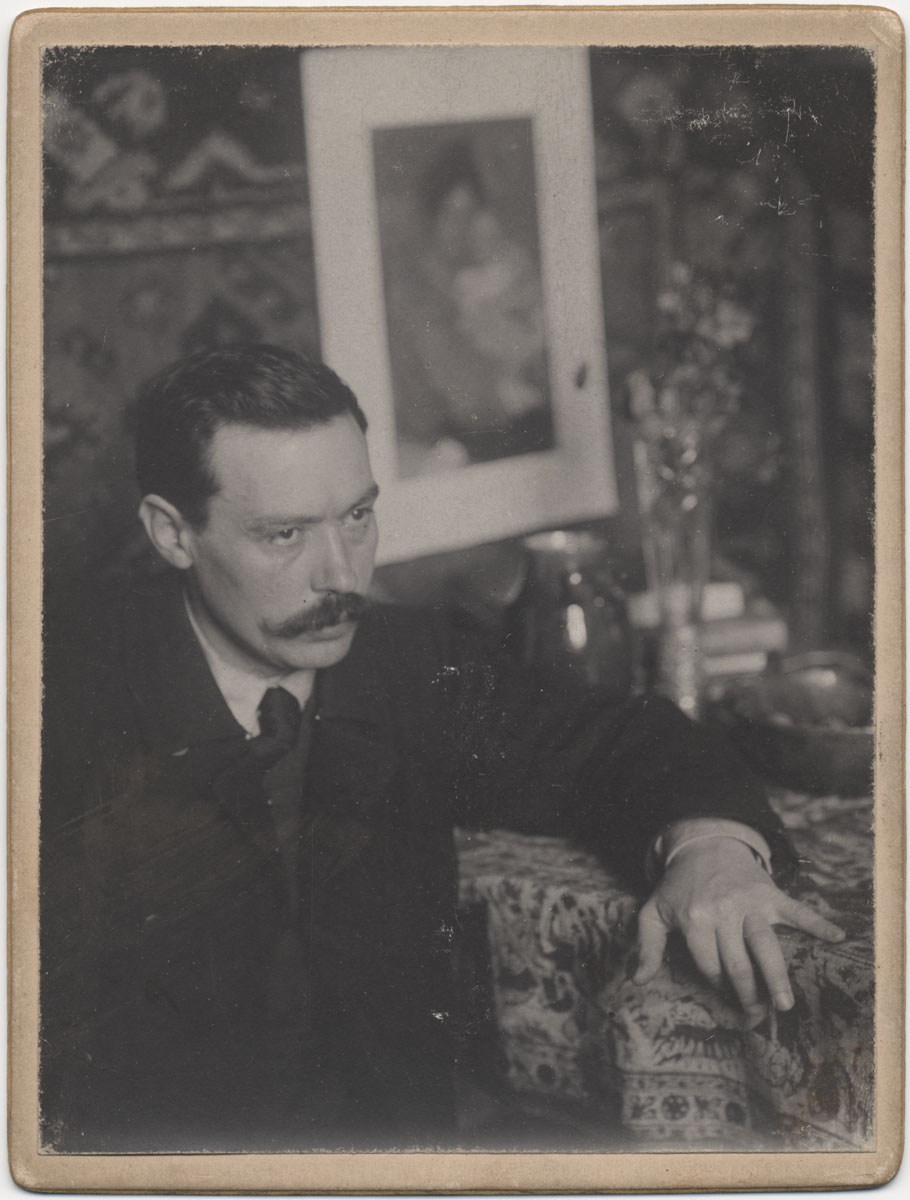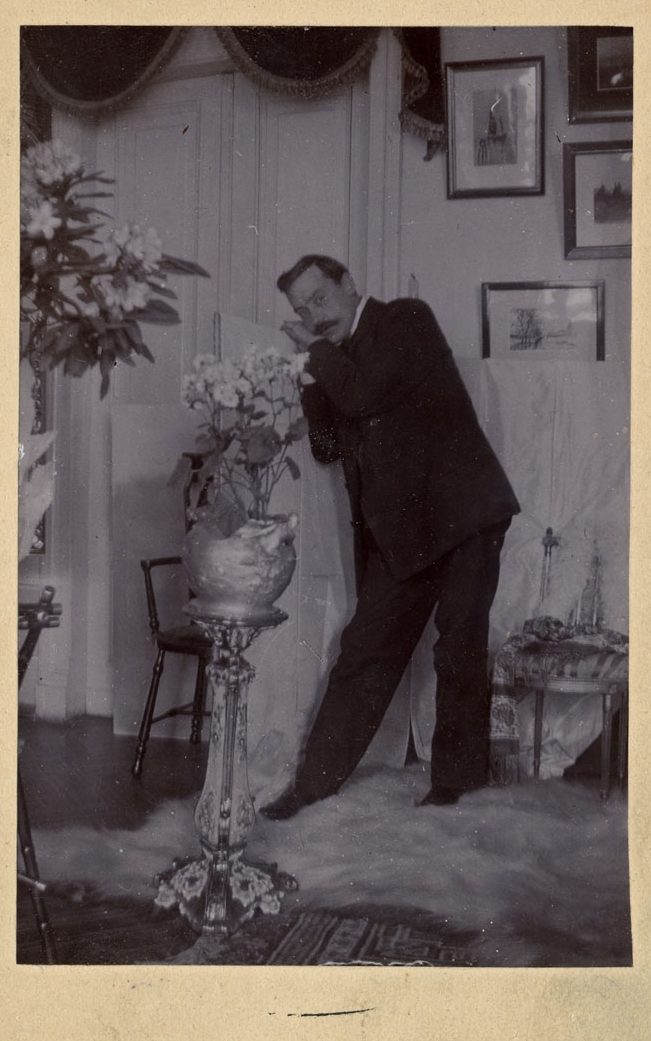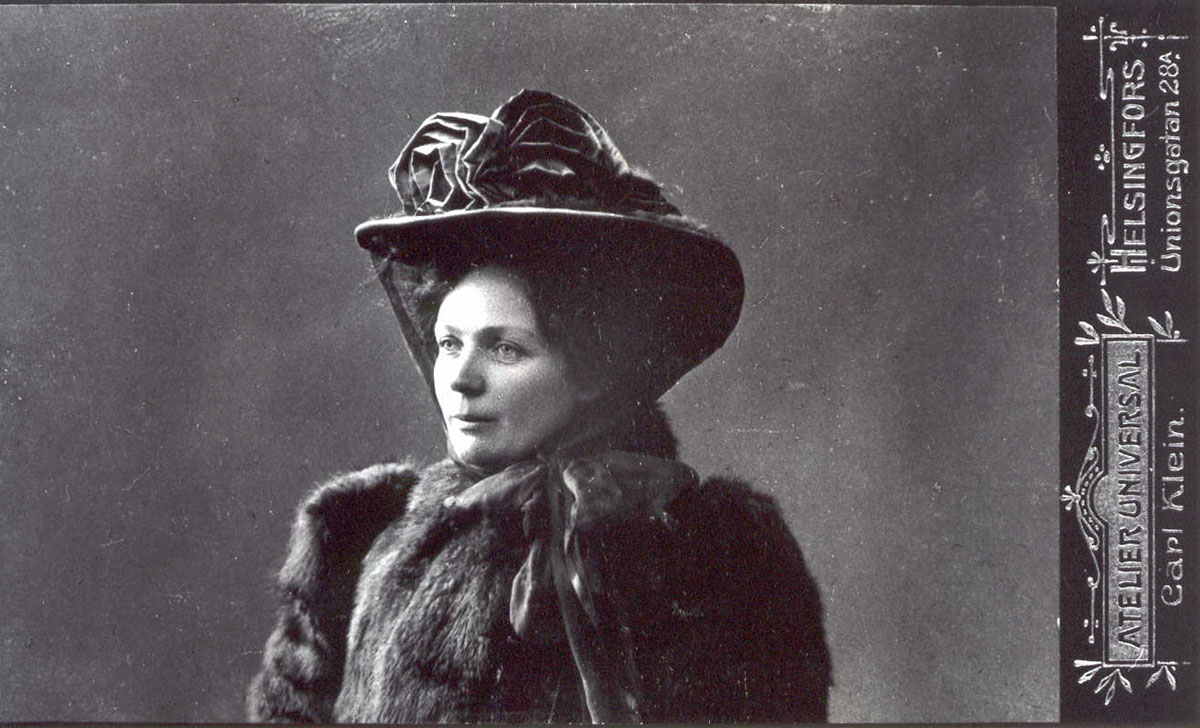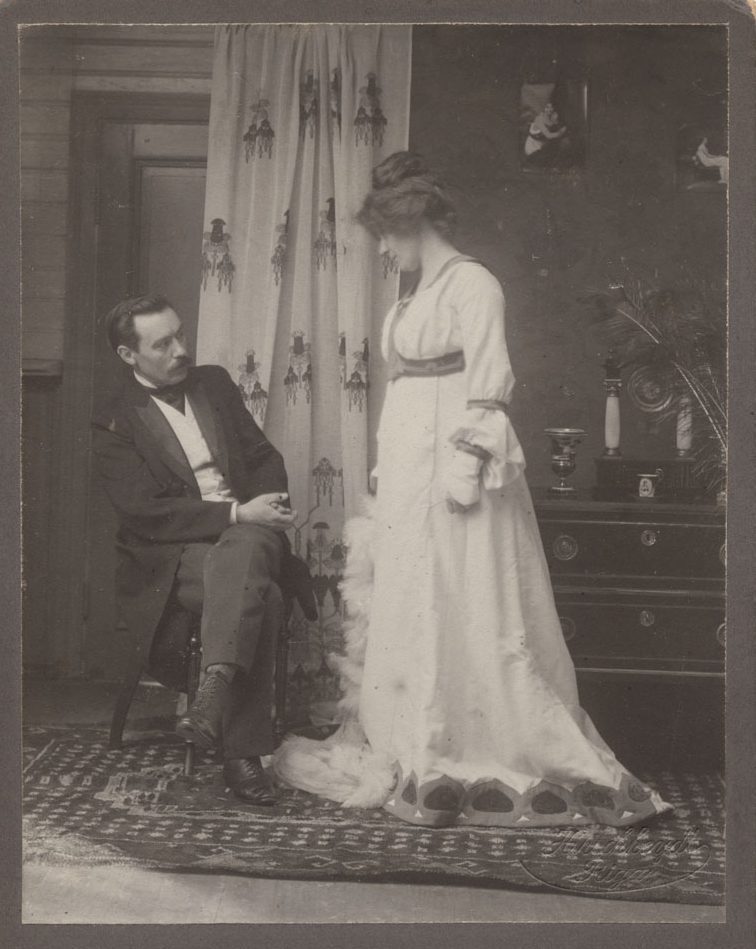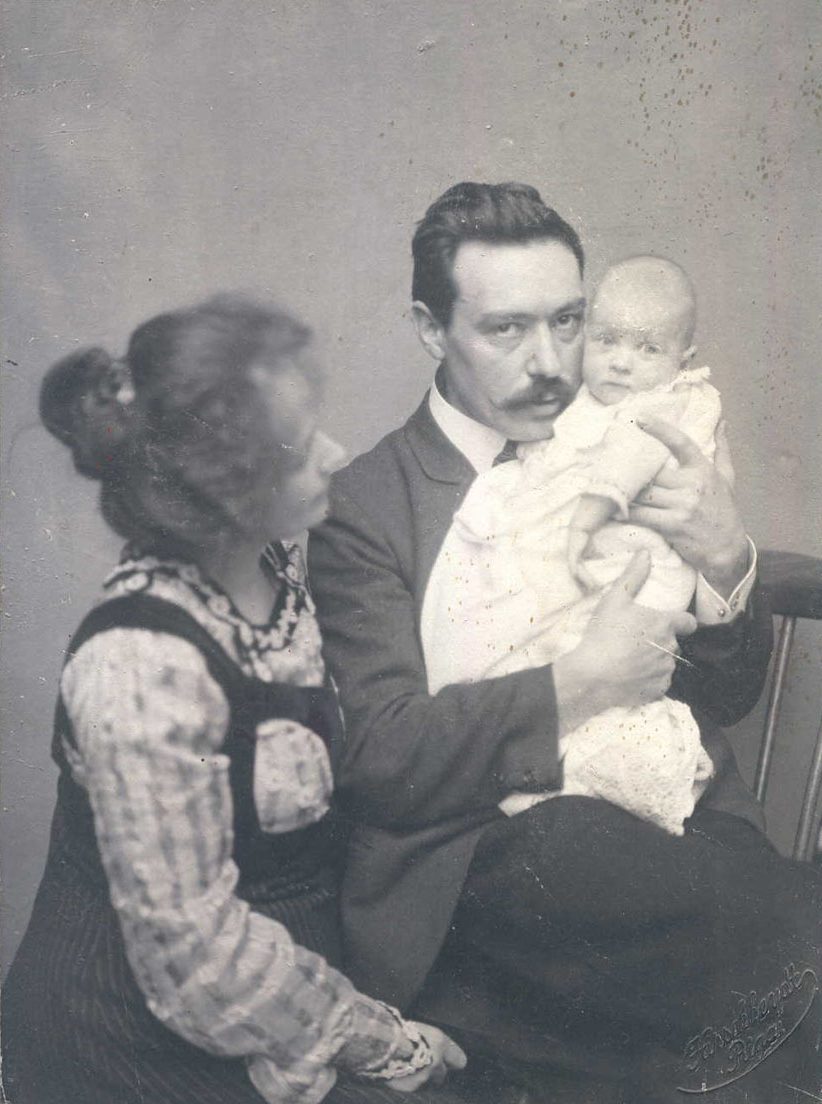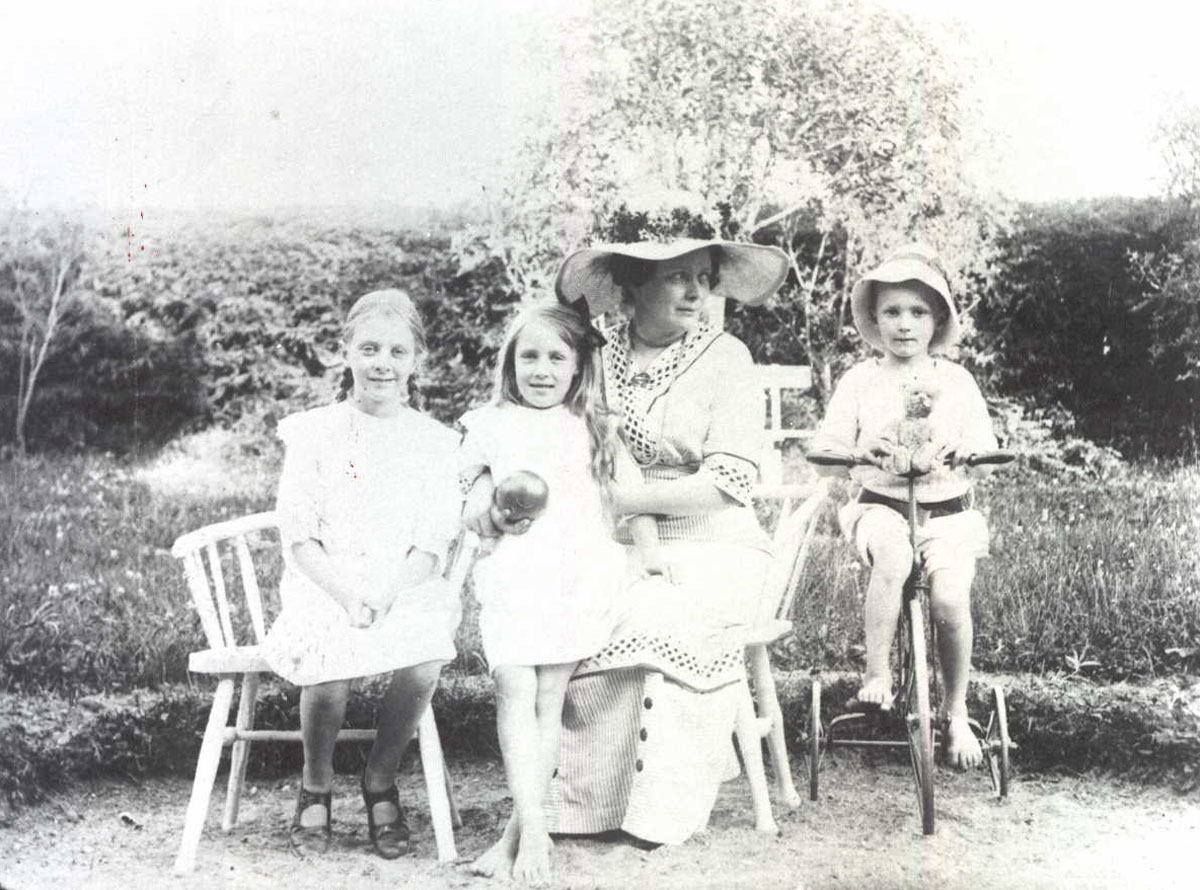Janis Rozentāls was an artist who was one of the founders of the professional fine arts of the Latvian nation. He helped to modernise Baltic art and was a theorist, critic and brilliant talent whose sparkle has never been lost.
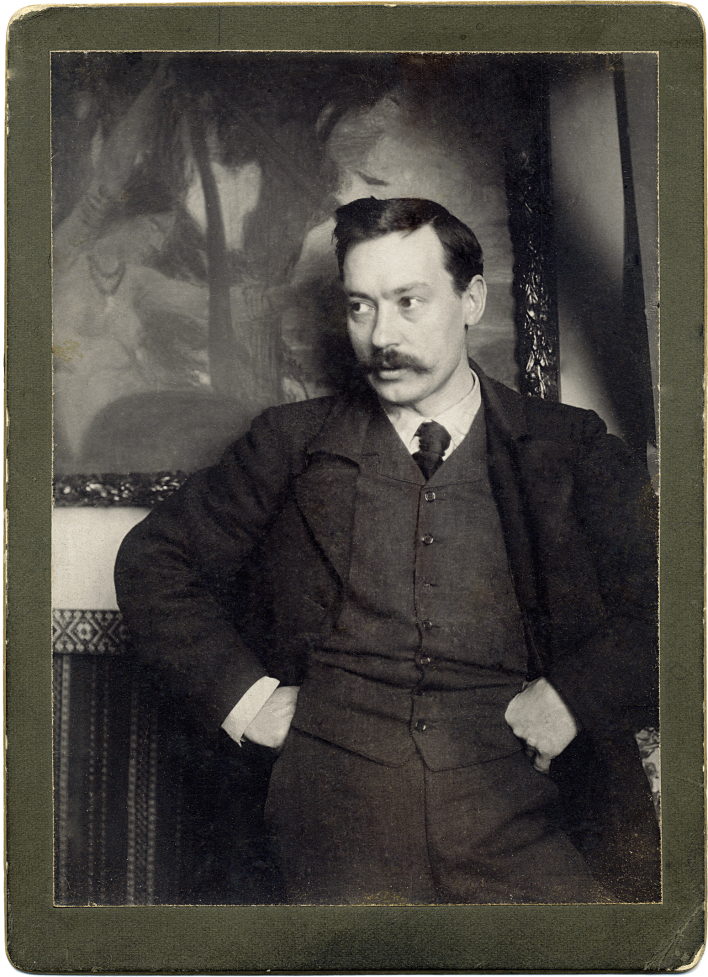
Janis Rozentāls
1866–1916
Galerija
Janis Rozentāls was born near Saldus on March 18, 1866. His father was a farmer. His parents could not afford to educate their five children, so Janis first attended a private school in Saldus and then spent six months at the Kuldīga District School. At the age of 14, the boy moved to Rīga to find work and earn a living. He became a painter and was also a fan of art and the theatre. Janis Rozentāls sang in the choir of the Rīga Latvian Theatre, where he met many friends and contemporaries.
1888 was a key year in Janis Rozentāls’ life. He attended drawing classes at the Riga (German) Trade school, and at an art fair in St Petersburg, one of his drawings received the silver medal. That same autumn, he was admitted to the Painting Department of the St Petersburg Academy of Art. There he studied academic painting that was rooted in the traditions of Classicism, but later, as the teaching staff changed, he focused more on art that was based in the principles of realism. Realism is seen in his diploma painting, “From Church” (No baznīcas, 1894), for which the young artist received a first-level degree as an artist.
Many talented young Latvians studied at the academy and other art schools in St Petersburg in the late 19th century, and they would become the fathers of professional fine arts in Latvia ˗ Rozentāls, as well as Vilhelms Purvītis, Johans Valters, Ādams Alksnis, Rihards Zariņš, Gustavs Šķilters, and many others. In 1891, they established a group of Latvian artists called “Rūķis” (Gnome) and it was of great importance in Latvian art. They organised organised thematic evenings, dreamed about the future of Latvian art, discussed new aspects of artists’ lives in St Petersburg, and critiqued each other’s work.
Of importance was Janis Rozentāls’ focus on art in Western Europe. His first foreign trip in 1897 led him to an exhibition of industry and art in Scandinavia, and there he saw artworks from the Nordic countries and other countries. In 1898, in turn, an instructor at the St Petersburg Academy of Art, painter Arkhip Kuindzhi, paid for Rozentāls and other students at his master workshop to spend a month travelling around Western Europe. In future years, Rozentāls often travelled to Finland, France and Italy. The impressions that he got from his travels appeared in Rozentāls’ paintings. He wrote articles about important aspects of Finnish and Western European art for the magazine “Vērotājs” (Observer).
In 1899, Rozentāls returned to Latvia from St Petersburg, first settling in his native Saldus, where he bought a plot of land and built a studio for himself. Still, the provincial nature of the region and problems with money forced Rozentāls to move once again to Rīga in late 1901. He found a home at Kalnciems Street 39, where his friends, the Baltic German painters Bernhardt and Eva Borchert were living.
Late in 1902, Finnish singer Elli Forssell arrived in Rīga during a concert tour. Janis Rozentāls attended one of the two concerts that she presented, and afterward, the Grosvalds family invited him to a reception in honour of the vocalist. This was a fateful meeting. On March 5, 1903, Janis Rozentāls and Elli Forssell were married in Helsinki. They had three children ˗ Laila Gedde (1903˗1977), Irja Ausma (1906˗1984), and Maris Miķelis (1907˗1952). Elli was the ideal woman for her husband in life and in art. Rozentāls depicted her as Eve and as Mary Magdalene at the foot of the cross. Most often, however, Elli Rozentāls appeared as a Madonna, a gentle and motherly woman with a child in her arms: “Mother and Child” (Māte un bērns, 1904) and “Under the Rowan Tree” (Zem pīlādža, 1905).
The Rozentāls family spent summers at the Forssell family’s summer home in Finland. There Janis Rozentāls met many Finnish cultural workers and artists, and impressions from Finland continued to be important in his creative work.
The foundation for Janis Rozentāls’ work was academic and realist painting that he learned in St Petersburg, but over the course of time, his style changed. Rozentāls was influenced by Impressionism and, later, Art Nouveau and Symbolism. Well-known paintings from the late 19th and early 20th century include “In the Artist’s Studio” (Mākslinieka darbnīcā, 1896), “Jubilant Children” (Gavilējošie bērni,1901), etc. Art Nouveau and Symbolism appeared in “Death” (Nāve, 1897), “Princess with a Monkey” (Princese ar pērtiķi, 1913), and others. In 1910, Rozentāls designed a decorative fresco for the front façade of the Rīga Latvian Society Building, depicting mythological Latvian characters, as well as allegories which symbolised the physical, spiritual and moral values of humankind.
Rozentāls most often painted portraits. He painted cultural workers, friends and family members, and he often worked on commission. Rozentāls also painted images of everyday life and of religion.
World War I brought the Rozentāls family to Finland, where they settled on an island. Janis Rozentāls suddenly died on December 26, 1916. The artist was initially buried in Helsinki, but in 1920, when the family returned to Rīga, his remains were reburied at the 2nd Forest Cemetery.
Elli Forssell
(1871–1943)
Finnish singer Elli Forssell was the wife of painter Janis Rozentāls, and she was of great importance in Latvian cultural life during the early 20th century. She was a graduate of the Helsinki Conservatory and honed her skills in Milan, Rome and Paris. Forssell often appeared in concerts. Her teachers included Abraham Ojanperä, Jean Sibelius and Martin Wegelius, and her repertoire included compositions by Handel, Gluck, Mozart, Rossini, Schubert, Schumann, Sibelius, Melartin and other composers. She also sang Finnish folksongs.
Elli Forssell’s family was part of the Finnish intelligentsia. Her father, Adolf Theodor Forssell, was a civil servant in the agricultural board in Helsinki. Mother Anna Wendla Augusta Forssell (née Bonsdorff) had a good musical education, and when her daughter began to sing, she sometimes accompanied her on the piano. Sister Anna studied violin performance at the Helsinki Conservatory and then honed her skills in Munich.
Among Elli’s friends when she was a child were the future Finnish textile artist Ilona Jalava and singer Aino Akti. When she was a teenager, one of her friends was composer Erkki Melartin, who would go on to become the rector of the conservatory. Elli’s cousin is the distinguished Finnish author Maila Talvio.
In late 1902, Elli Forssell appeared in Rīga as part of a concert tour. Janis Rozentāls, who was interested in Finnish culture, was in the audience. The concert left a deep impression on him, particularly in terms of Sibelius’ “Black Roses”. Janis and Elli met at a party that was organised after the concert in her honour by the family of lawyer Friedrich Groswald.
Nine days after meeting Elli, Rozentāls wrote to her father: “The best and most beautiful that I can say is that I fell in love with Elli from the first glance. I would never have believed that someone would experience such love. I fell that I know much about her essence, her soul and her appearance. It is as if we have known each other for 1,000 years. My most hidden and ideal ideas about the image of a woman have been seen and experienced since early youth, and now this ideal stands before my eyes. I immediately felt and will feel more and more, as if I had only loved her from antiquity. I will always love her like no one else could do. I don’t know how this happened, but it was so simple and amazing. We did not need to explain ourselves, and or souls were so clearly open to one another. We both knew that we belong and will forever belong to one another. No matter what, we will live for one another, and we will be happy.”
Theodor Forssell replied to his future son-in-law: “From the very beginning I was very happy that my Elli will be able to cast a bridge between two small nations that face the same situation in relation to the tsarism that is ruling us. You Latvians can learn a few things from us, but we should learn from you how a sustainable nation can preserve its nationality under very difficult external circumstances.”
After their wedding, Elli became an active participant in social and cultural life in Rīga. She did not appear in concert as often as before the marriage, but she continued to perform in Latvia and Estonia. Elli learned new songs by Alfrēds Kalniņš and Emīls Dārziņš, as well as Latvian folksongs. Judging from reviews of her performances, Elli’s mastery was increasing all the time.
Elli was destined to live much longer than her husband. In 1920, she and her children returned to Latvia, and this was her explanation: “I want to raise Rozentāls’ children as the same kinds of patriots as their father were. I could not and did not want to break my links to the Latvian nation.” While living in Rīga, Elli helped to establish friendly links between Latvia and her native Finland.

